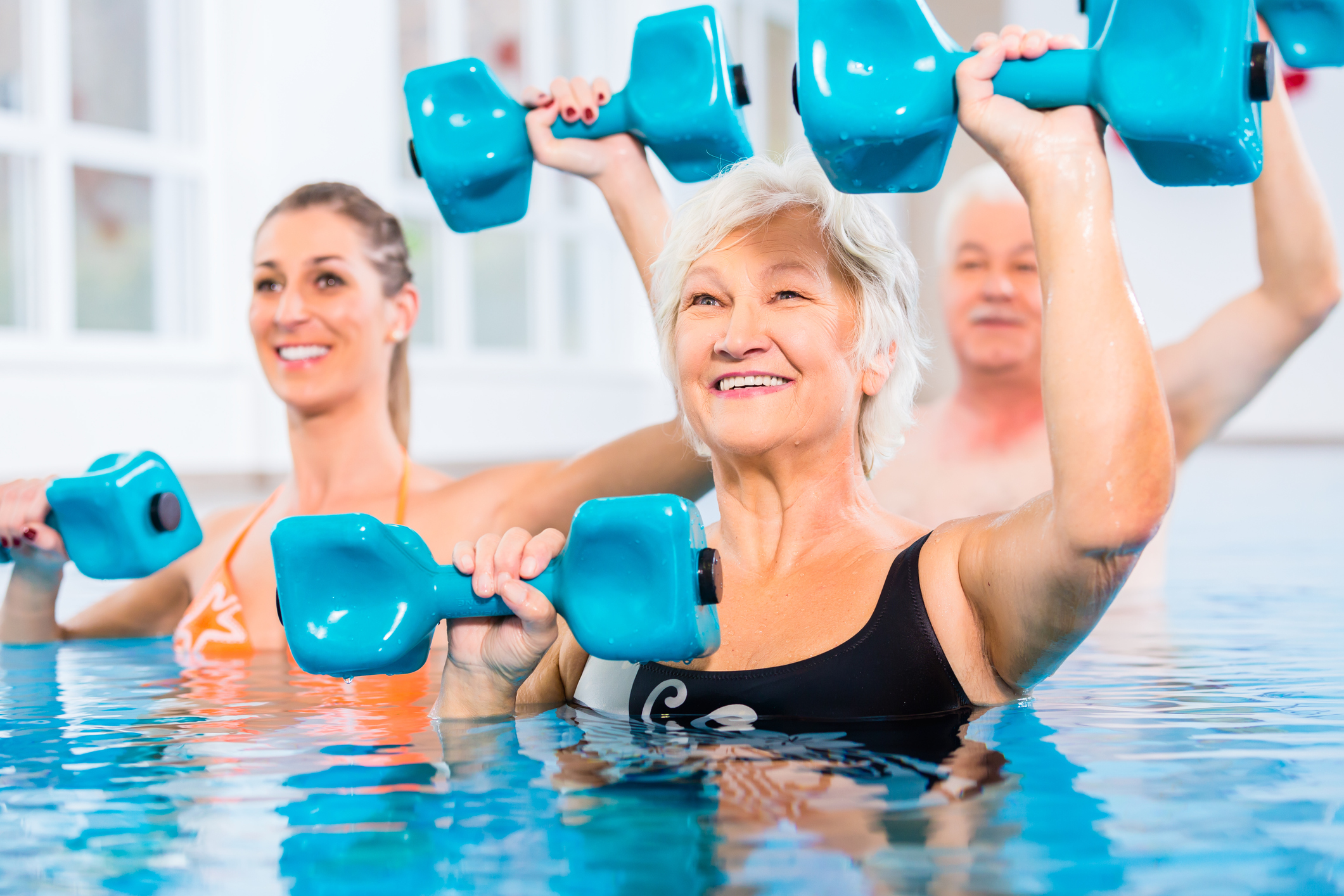Stay Active with Aquatic Exercise

Have you taken the plunge into aquatic exercise? This low-impact aerobic activity has become very popular among older adults, and for good reason.
When you exercise in a swimming pool, the water provides buoyancy, which makes you feel up to 90% lighter. It also reduces pressure and strain on your joints, which is especially helpful for people who have arthritis or other problems with their knees, feet, legs or back. You may find that it’s easier and less painful to do exercises – such as walking, running and jumping – in the water than on land. Working out in a pool also means you won’t overheat, and the risk of injury from falling down is much lower.
Not a good swimmer? Don’t worry – aquatic exercise is done standing up in water that’s waist, chest or shoulder deep. You can do it on your own or in a class led by a fitness instructor.
Aquatic exercise classes are held at community and public pools, private gyms, aquatic facilities and rehabilitation centres (where aqua exercise may be incorporated into physiotherapy). Some facilities offer warm-water pools, and some even use saltwater, which increases buoyancy.
The benefits of aquatic exercise
Does aquatic exercise offer a good workout? Absolutely. In fact, fitness in the water can feel just as intense as exercising in a gym. Here’s how:
- Aqua exercise classes often combine cardio and strength training. This helps you improve or maintain your aerobic capacity and muscle tone – without putting stress on your joints.
- The water provides resistance, which helps you build up your endurance and strengthen your muscles and bones (water workouts can help prevent osteoporosis).
- Aquatic exercise can also help you improve your balance, stability, coordination and flexibility.
- Equipment such as water weights, resistance tubing and ankle cuffs can increase resistance when you’re ready to do so.
- Exercise modifications and the use of flotation devices can help people with arthritis and other mobility challenges get maximum benefit from their workouts.
- A one-hour aqua exercise workout burns up to 500 calories.
- Working out with a group is a fun social activity, which helps you stay motivated and engaged.
Getting started
Check around your community to see where aquatic exercise classes are available. You may want to try classes that are designed for older adults or people with arthritis, if suitable.
As always, safety first! If you are new to aqua exercise or have not been active in a while, start slowly and be patient with yourself. Take a break during the class if you need to. As you become familiar with the exercises and the sensation of working out in water, you will feel more capable and confident – and you’ll enjoy yourself more. As you build strength and endurance, you can gradually increase the intensity and resistance of your water workouts.
Be careful to stay hydrated by drinking water after each workout. Since you’re in a swimming pool, you might not notice that you’re perspiring, but you will work up a sweat!
Before you start aqua exercise or any new fitness activity, remember to consult your physician.
Additional resources
Water walking (Arthritis Foundation)
